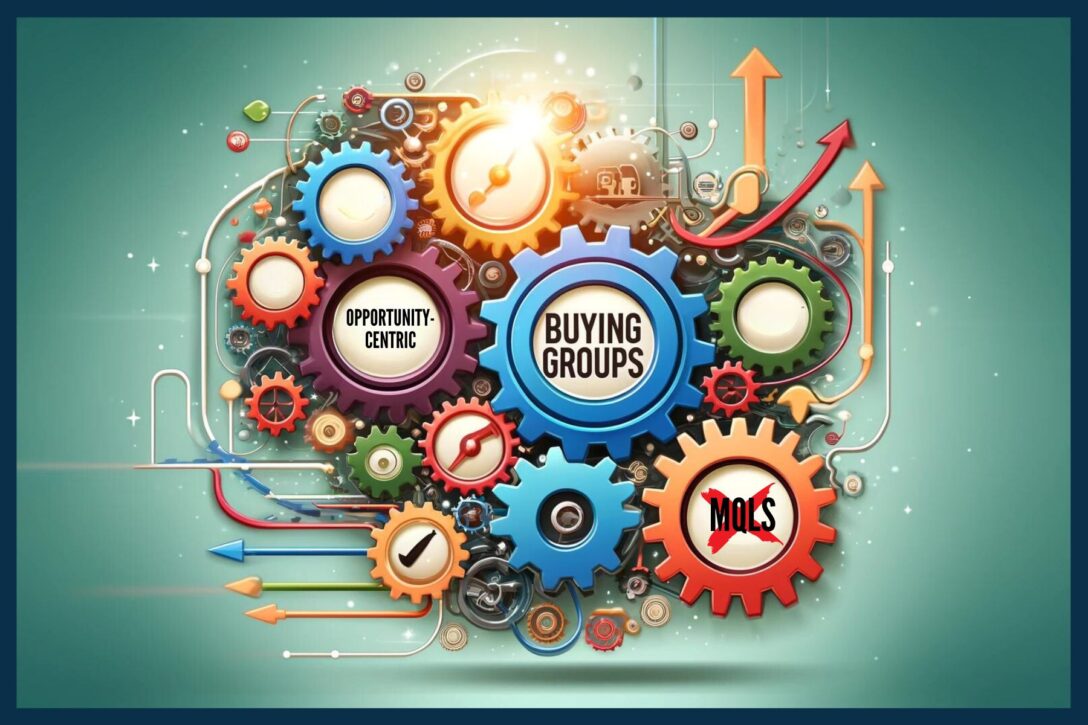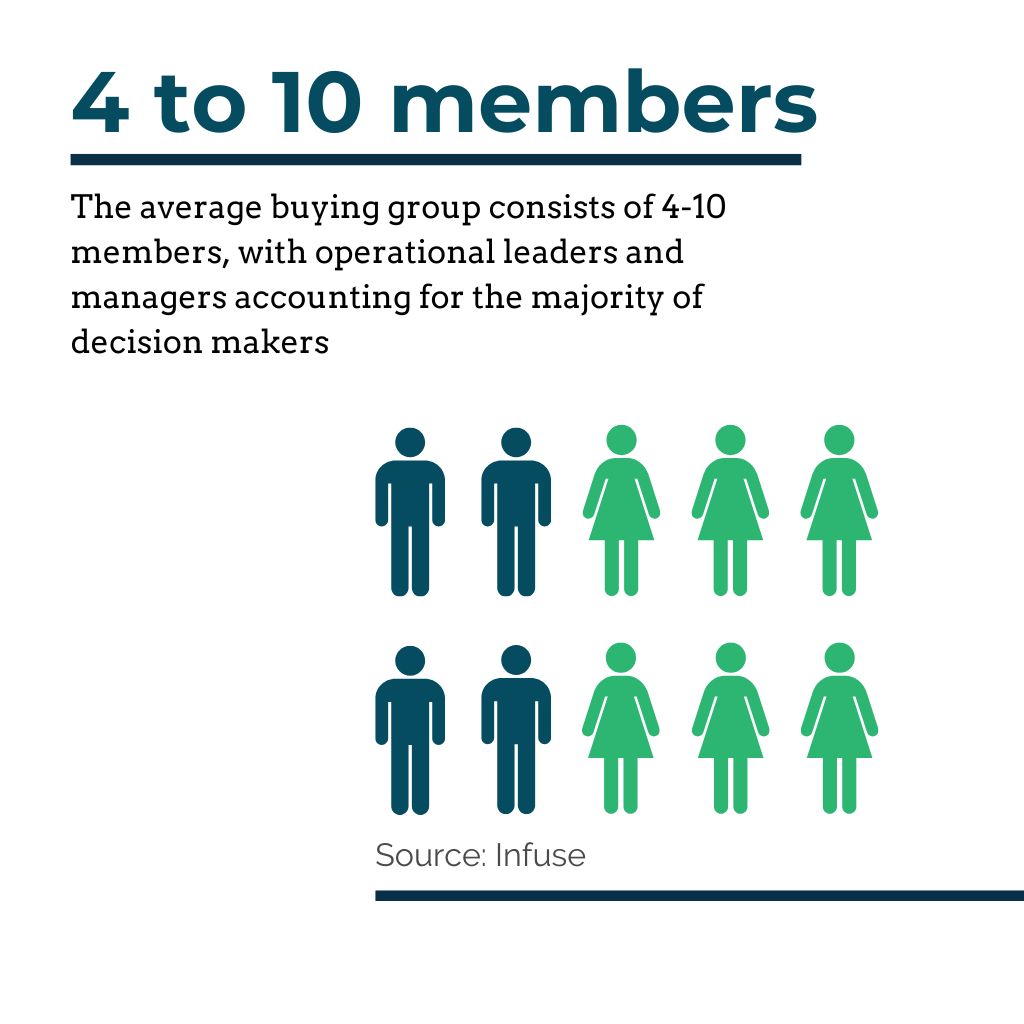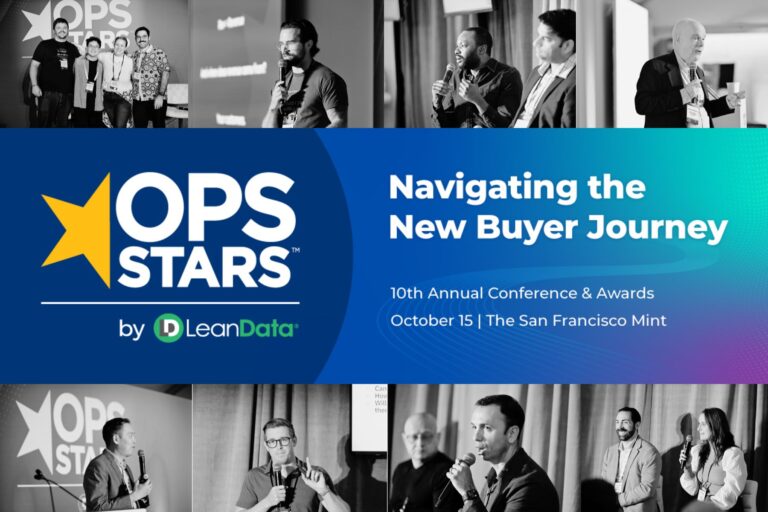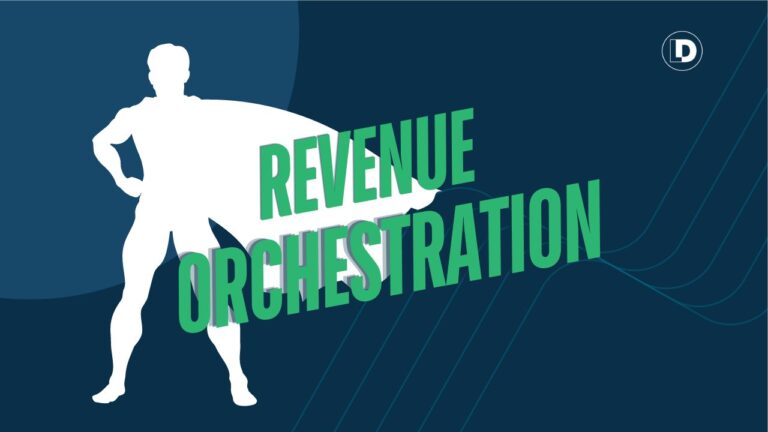Here are 25 statistics on Buying Groups, Opportunity-based motions, and MQLs that’ll make you rethink your current go-to-market strategies.

Buying Group Statistics
Buying Groups are buying committees, just like those found in most Account-Based Marketing (ABM) initiatives. A Buying Group is connected to a particular deal moving through a sales cycle. At their core, buying groups are made up of individuals involved in an organization’s decision-making process.
Increased Influence on Buying Decisions

- Conventional wisdom believed the buying committee was around six people. In reality, buying committees are 10, 12, 14 people or more (Forbes).
- The average Buying Group consists of 4-10 members, with operational leaders and managers accounting for the majority of decision makers (Infuse).
- 92% of B2B buying decisions are made by groups of 2 or more people (Forrester).
- There’s an average of 27 engagements with seller-related content (both known and anonymous) across a Buying Group (Forrester).
- Deals over $250,000 require an average 19 external stakeholders to close successfully (Clari).
- More than 80% of sellers say deals have stalled or been lost in the past 12 months due to a key stakeholder leaving (6sense).
Higher Conversion Rates
- Delivering a verified Buying Group to sales results in a 20% to 50% improvement in conversion rates (Forrester).
- In bigger Buying Groups, sales outreach can increase conversions by 3.4 — 4.4x if sales talk to 11+ people instead of just one person (influ2).
Opportunity-Based Motion Statistics
An Opportunity motion recognizes that today’s B2B buyer is a group of individuals, each performing a specific role on the buying committee. In this motion, marketing teams focus on identifying members of the buying committee and engaging with all of them.
Then, as marketing creates and qualifies a buying group, the group is placed into an Opportunity and sent to the sales team.
- 5% to 15% increase in hidden Opportunities as a result of an Opportunity-based Buying Groups motion (Forrester 2024 B2B Summit – Embracing The Business Value Of Buying Groups).
- 10% to 20% increase in new Opportunities as a result of better prioritization and qualification of Buying Groups ((Forrester 2024 B2B Summit – Embracing The Business Value Of Buying Groups).
“The number one reason organizations aren’t moving to buying groups, signals, and a more advanced revenue process is one word: culture. We’re addicted to MQLs as the cornerstone of our culture.”
Terry Flaherty Your MQL-Centric Culture Costs Millions, Forrester B2B Summit 2024
Stats Exposing the Problems with MQLs
While MQLs have been a cornerstone in B2B marketing strategies, several challenges undermine their effectiveness.
Low Conversion Rates
- A Lead-centric process has a 99% failure rate, from inquiry to close (Forrester).
- As of 2023, industry benchmarks suggest the average MQL to SQL conversion rate across all industries typically ranges from 10% to 20% (Agency Analytics).
Quality Over Quantity Issues
- 61% of B2B marketers send all leads directly to sales despite only 27% of those leads being qualified (MarketingSherpa).
- Companies who achieve 100% of their MQL goal, often only achieve around 30% of their pipeline goal (Madkudu).
- Sales organizations report only 7% of leads they received from their marketing organizations as high quality (Hubspot).
- For every 100 MQLs, each marketing campaign should yield at least 13 successful SQLs (ClickUp).
High Cost per Lead
- The average cost per lead in B2B SaaS is $237 (firstpagesage).
Delayed Follow-Up
- The average first response time of B2B companies to their leads was 42 hours with 23% of the companies never responding at all (Hubspot).
Inconsistent Metrics
- 50% of companies report that the definition of an MQL is susceptible to change from quarter to quarter (Databox).
Buying Groups Are Here for Real
Organizations have been talking about Buying Groups for years but there’s clear momentum now based on two key trends: (1) current models simply aren’t working, and (2) technology is ready to connect and activate a Buying Group Strategy.
Two companies currently using a Buying Group strategy shared the following results at the 2024 Forrester B2B Summit:
Palo Alto Networks
- 2x the close won rate
- 20% improvement in MQL to opportunity
- 15% improvement in revenue
- 39% improvement in conversion rate
- > 30 day improvement in deal velocity
- 71% improvement in new logo revenue
Ready to take the first step into Buying Groups? Shift from Leads to Opportunities.










